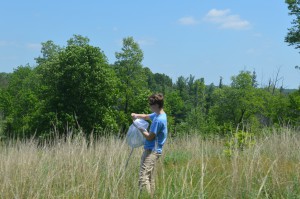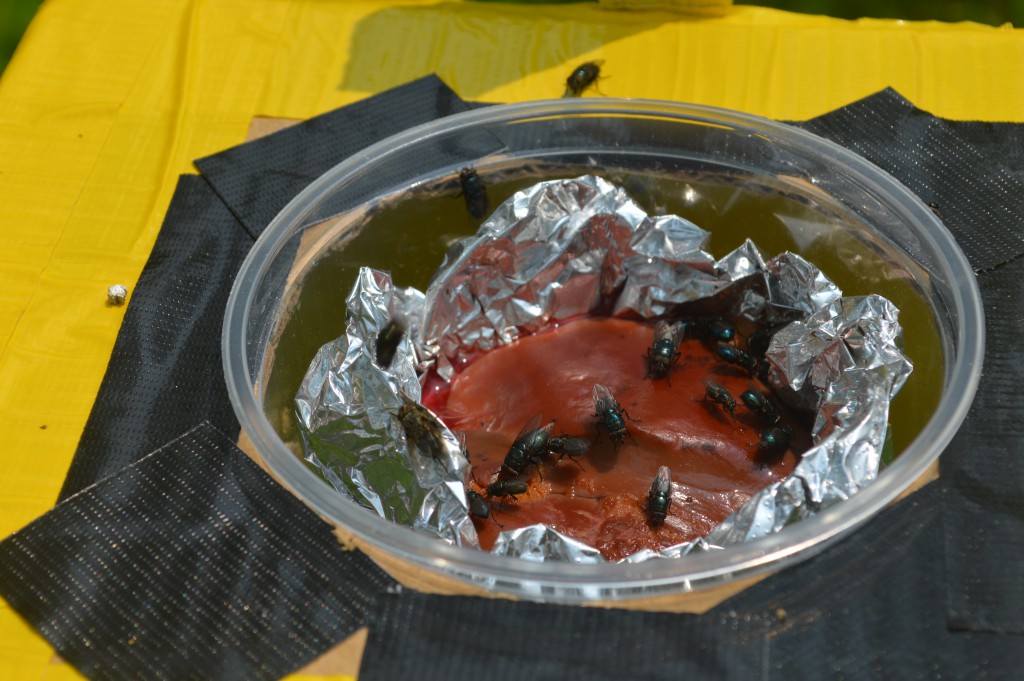The activities are as follows:
- Teacher Guide
- Student activity, Graph Type A, Level 3
- Student activity, Graph Type B, Level 3
- Student activity, Graph Type C, Level 3
- Grading Rubric
- Digital Data Nugget on DataClassroom
Most people think that maggots are gross, but they are important decomposers in many ecosystems. Without maggots and other decomposers, we would all trip over the bodies of dead organisms every time we went outside! Not only do maggots break down dead animal bodies in nature, but they also decompose human bodies!
Forensic entomology is a science that uses these amazing insects to help the criminal justice system. Maggots are the larvae of blow flies. Remember the next time you swat away a fly, these little insects help police solve crimes! Adult blow flies are usually the first to arrive at a crime scene with a dead body. The blow flies lay their eggs, or oviposit, shortly after their arrival. These eggs hatch and become maggots that feed on the body. Scientists can use the age of the maggot to help estimate how long someone has been dead. The longer a body has been dead, the longer ago the eggs hatched and the older the maggot larvae will be.
Kristi and Parker, two forensic entomologists, were in the field one day, documenting the timing of blow fly oviposition. They noticed something unexpected! There were wasps stuck in the traps they were using to catch blow flies. The scientists wondered if these wasps can affect a blow fly’s decision to oviposit because wasps attack adult blow flies and also eat their eggs. Kristi and Parker knew that blow flies have an incredible sense of smell and sight. They wondered if blow flies are able to use their senses to detect if a wasp is near a body and then choose to avoid the area or delay laying their eggs. The scientists predicted that blow flies should delay their oviposition when wasps were present near a body. If wasps indeed cause blow flies to delay oviposition, this could change how scientist’s use maggot age to determine how long ago a body died.
To test their hypothesis, the scientists did 10 trials in the field. They used bait cups that contained chicken liver to simulate a dead human body. A total of 9 bait cups were used in each of the 10 trials, for a total of 90 cups. Of the 9 cups used in each trial, three contained only chicken liver, to represent a body with no wasps present. These cups were used as controls. Three cups contained chicken liver and a wasp pinned to the side of the bait cup so that there was a visual cue of the wasp. The final three cups had a crushed wasp sprinkled over chicken liver to see if blow flies could use a smell cue to tell that a wasp was present without seeing them. Kristi and Parker checked the cups every half hour for the presence of blow fly eggs. If they saw any eggs, they recorded the time of oviposition in hours after sunrise. They then brought the maggots to the lab and raised them to the third larval stage and identified them to species.
Featured scientists: Kristi Bugajski and Parker Stoller from Valparaiso University
Flesch–Kincaid Reading Grade Level = 7.6



I appreciate that you offer different levels of the same activity. Differentiation can take so much time for the classroom teacher.
I would love to use this one (3.11.16 CSI: Crime Solving Insects) in my forensic science lab, but the links to the student activities are not live. Can this be fixed?
Hi Karen! Yes, we temporarily took it down because we got some feedback from a recent conference and had to take some time to incorporate edits. The student versions are back online now.